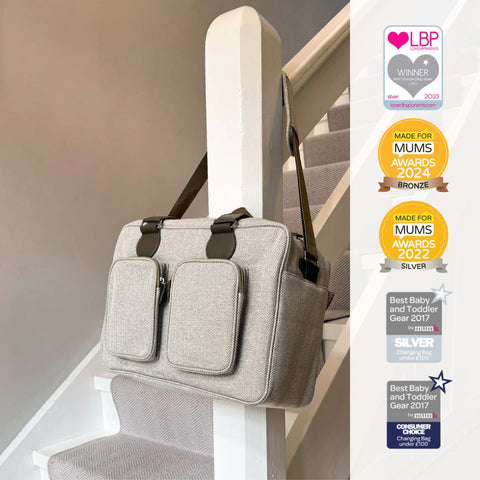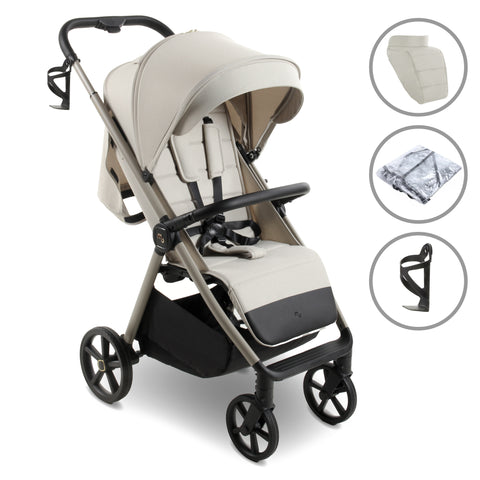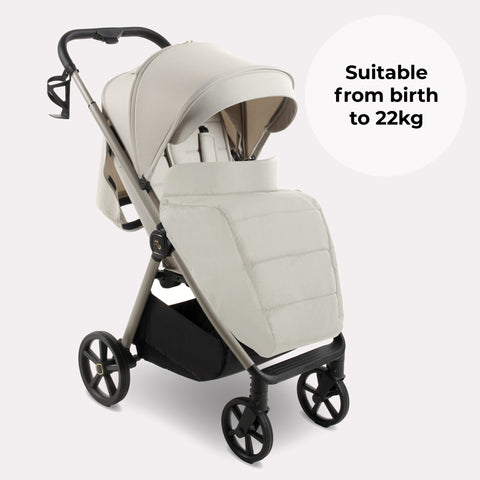What are the UK Car Seat Laws? – A Guide for Parents
What are the UK Car Seat Laws? – A Guide for Parents
When it comes to child safety in the car, making sure you're following the latest UK car seat laws is essential. As a parent, your top priority is ensuring your little one is safe and secure during every journey. Whether you're a new parent or just need a refresher, understanding these regulations can help you make informed decisions when purchasing a car seat and using it properly.
At My Babiie, we believe in both comfort and safety, which is why we’ve created this handy guide to help you navigate the UK’s car seat laws with confidence.
The Basics of UK Car Seat Laws
UK law is very clear when it comes to car seats : children must use a car seat until they’re either 12 years old or 135 cm tall (whichever comes first). After this, they must wear a seatbelt like everyone else in the car.
To make sure your child is protected during every journey, you’ll need to ensure they’re in the right type of seat for their age, height, and weight. Let’s dive into the different groups of car seats to help you figure out which one is right for your child.
Car Seat Groups Explained
Car seats in the UK are categorised by groups based on your child’s weight or height. Here’s a breakdown of the main groups:
Group 0+ (Birth to 13 kg)
This group is for babies from birth until they’re around 12-15 months old, depending on their weight. Group 0+ car seats are rear-facing and should always be used for younger babies to provide maximum support for their developing spine and neck. Many travel systems, like the My Babiie Range, come with compatible Group 0+ car seats for convenience. Browse our products
Group 1 (9 kg to 18 kg)
These car seats are suitable for toddlers between 9 months and 4 years old. Group 1 seats can be rear-facing or forward-facing, but keeping your child rear-facing for as long as possible is strongly recommended for added safety. Browse our products
Group 2/3 (15 kg to 36 kg)
Once your child reaches 15 kg (roughly 3.5 years old), they’ll transition to a high-back booster seat, which can be used until they’re 12 years old or 135 cm tall. Booster seats lift your child so that the car’s seatbelt fits them correctly across their chest and lap. Browse our products
For families who prefer an all-in-one solution, consider multi-group car seats that grow with your child. These can cover Group 0+ through Group 3, allowing you to use the same seat from infancy to pre-teen. Browse our products
Rear-Facing vs. Forward-Facing: What Does the Law Say?
One of the most common questions parents have is when they can switch their baby to a forward-facing car seat. In the UK, the law requires that children must stay rear-facing until they’re at least 15 months old. Research shows that rear-facing seats provide better protection for a child’s head, neck, and spine in the event of a collision.
While it may be tempting to turn your baby forward-facing as soon as they reach 15 months, it’s a good idea to keep them rear-facing for as long as your car seat allow - especially if it meets the i-Size safety standard.
What is i-Size?
i-Size is part of the newer R129 regulation, designed to make car seats safer. i-Size seats are based on your child’s height rather than weight and provide more side-impact protection. They also ensure that children remain rear-facing for at least 15 months.
If your car is compatible with ISOFIX, an i-Size seat is often the best option for easy installation and added safety. Many of our My Babiie car seats are ISOFIX-compatible to give parents peace of mind.
When Can a Child Travel Without a Car Seat?
There are a few exceptions to the car seat law. A child can travel without a car seat in the following situations:
In a taxi or minicab (but they must wear a seatbelt if over 3 years old, and they must sit in the back).
In an emergency if you have to make an unexpected trip over a short distance, and there is no car seat available.
In a classic car that doesn’t have seatbelts in the rear (children over 3 can sit in the back without a car seat, but children under 3 must be in the front with an appropriate car seat).
However, these are exceptions rather than the rule, and it's always best to use a car seat whenever possible.
Top Tips for Car Seat Safety
Here are a few additional tips to ensure your child’s car seat is safe and installed properly:
Read the manual: Every car seat comes with instructions on how to fit it securely. Follow them carefully.
Check for ISOFIX compatibility: If your car has ISOFIX points, using an ISOFIX car seat makes installation easier and safer.
Get professional advice: Many retailers, including My Babiie, offer car seat fitting advice and services to ensure your car seat is installed correctly.
Stay Safe on the Road
Choosing the right car seat and following the UK car seat laws can give you peace of mind that your child is as safe as possible while on the road. At My Babiie, we offer a range of stylish, safe, and comfortable car seats to suit every stage of your child’s development.
Remember, safety starts with making the right choices, so be sure to keep your car seat up to date and in line with the latest regulations.
For more information about our products, browse My Babiie's Car Seat range and explore our collection of high-quality car seats and travel systems.



















